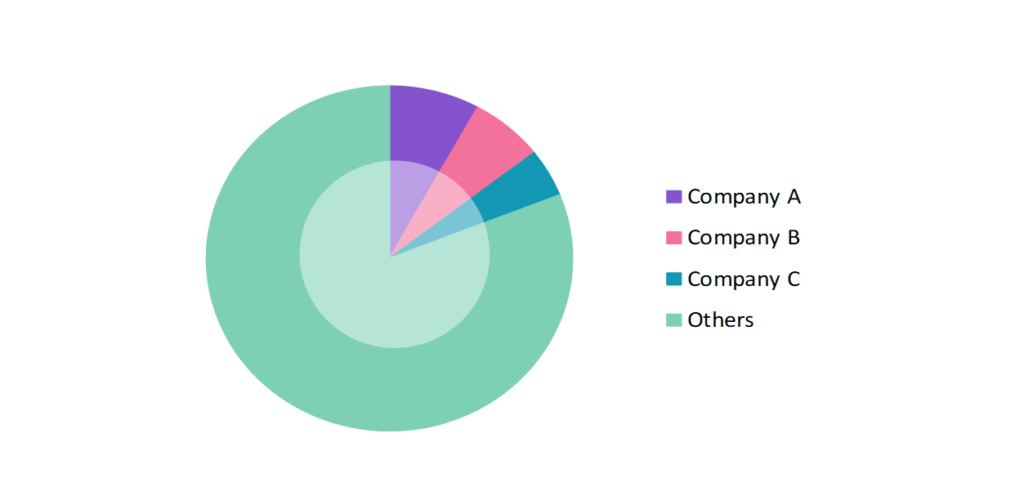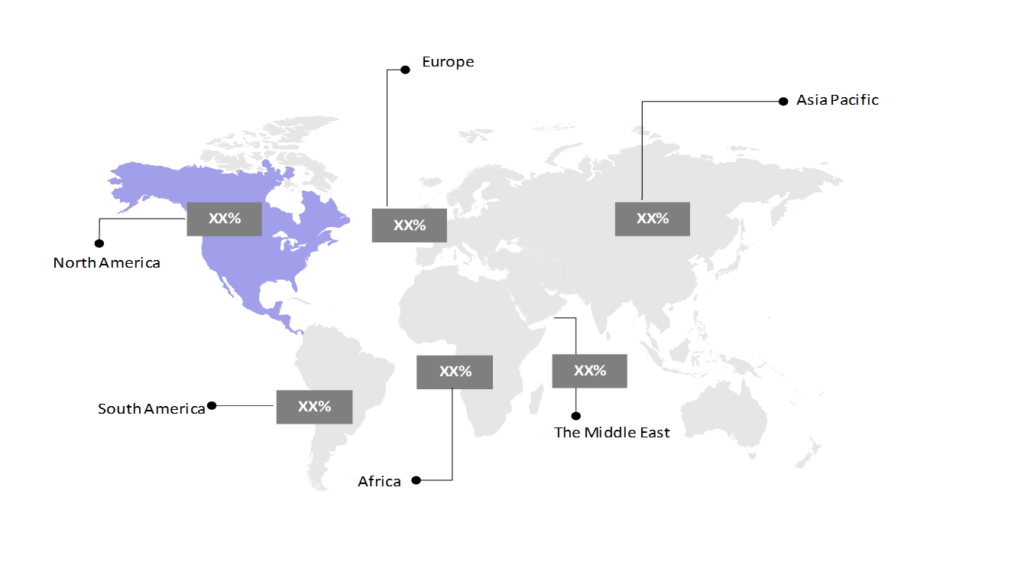Sports Apparel Market Analysis: Growth, Size, Share & Future Trends (2024-2029)
The market report offers a detailed analysis segmented by Product (Tops & T-Shirts, Trousers & Tights, Shirts, Others); by Sport (Soccer, Basketball, Baseball, Golf, Others); by End User (Men, Women, Children); by Distribution Channel (Specialty Stores, Supermarkets/Hypermarkets, Online Retail Stores, Warehouse Clubs, Others); by Geography (North America, South America, Asia Pacific, Europe, The Middle East, Africa).
Outlook

- The sports apparel market is estimated to be at USD 228.43 Bn in 2024 and is anticipated to reach USD 304.26 Bn in 2029.
- The sports apparel market is registering a CAGR of 5.9% during the forecast period of 2024-2029.
- The sports apparel market is experiencing robust growth, driven by a growing global emphasis on health and fitness. Consumers are increasingly seeking athletic wear that combines performance, comfort, and style. The integration of sustainable materials and advanced textile technologies is reshaping the market, while fashion trends like the revival of neon colors and the popularity of versatile one-piece garments are influencing consumer preferences.
Request a free sample.
Ecosystem

- The participants in the global sports apparel industry are always developing their strategies to preserve a competitive advantage.
- These companies invest heavily in marketing, sponsorships, and product innovation to maintain their market positions.
- Several important entities in the sports apparel market include Adidas AG; Nike, Inc.; Puma SE; Lululemon Athletica Inc.; Under Armour, Inc.; and others.
Ask for customization.
Findings
| Attributes | Values |
|---|---|
| Historical Period | 2018-2022 |
| Base Year | 2023 |
| Forecast Period | 2024-2029 |
| Market Size (2024) | USD 228.43 Bn |
| Market Size (2029) | USD 304.26 Bn |
| Growth Rate | 5.9% CAGR from 2024 to 2029 |
| Key Segments | Product (Tops & T-Shirts, Trousers & Tights, Shirts, Others); Sport (Soccer, Basketball, Baseball, Golf, Others); End User (Men, Women, Children); Distribution Channel (Specialty Stores, Supermarkets/Hypermarkets, Online Retail Stores, Warehouse Clubs, Others); Geography (North America, South America, Asia Pacific, Europe, The Middle East, Africa) |
| Key Vendors | Adidas AG; Nike, Inc.; Puma SE; Lululemon Athletica Inc.; Under Armour, Inc. |
| Key Countries | The US; Canada; Mexico; Brazil; Argentina; Colombia; Chile; China; India; Japan; South Korea; The UK; Germany; Italy; France; Spain; Turkey; UAE; Saudi Arabia; Egypt; South Africa |
| Largest Market | North America |
Get a free quote.
Trends
- Nostalgia-Driven Color Revival: Sportswear is seeing a revival of 1980s and 90s neon and pop colors, fueled by nostalgia. Brands like Nike, Adidas, and Reebok are reintroducing these vibrant hues in their collections, blending retro styles with contemporary designs. While classic colors like black, grey, and white remain staples, the re-emergence of neon adds a bold and energetic flair to modern sports apparel.
- Sustainable and High-Performance Fabrics: The sports apparel market is increasingly embracing sustainable materials, with a focus on eco-friendly fabrics like recycled polyester, bamboo, and organic cotton. These materials are favored for their moisture-wicking, breathability, and antibacterial properties, making them ideal for high-performance sportswear. Brands are responding to consumer demand for sustainability by incorporating these materials into their designs, offering both environmental benefits and enhanced comfort.
- Versatile One-Piece Garments: One-piece garments such as jumpsuits, rompers, and bike-unitards continue to gain popularity in sportswear due to their versatility and comfort. These garments, made from multi-way stretch materials, are perfect for a range of activities, from yoga to hiking. Their practicality and stylish appeal make them a favorite among teenagers and active individuals looking for functional yet fashionable sportswear options.
Speak to analyst.
Catalysts
- Health and Fitness Boom: The increasing global focus on health and fitness is a significant driver for the sports apparel market. As more individuals engage in physical activities like running, yoga, and gym workouts, the demand for functional and stylish sportswear continues to rise. This trend is further supported by the growing popularity of fitness influencers and social media platforms that promote an active lifestyle.
- Rise of Athleisure: The blurring of lines between athletic wear and casual wear, known as athleisure, is propelling market growth. Consumers are seeking versatile clothing that can be worn both during workouts and in everyday settings. This has led to increased demand for sportswear that is not only functional but also fashionable, with brands like Lululemon and Nike leading the charge.
- Technological Advancements in Fabric: The development of high-performance fabrics that enhance comfort, durability, and functionality is driving market growth. Innovations such as moisture-wicking materials, compression technology, and temperature-regulating fabrics are increasingly popular among consumers seeking apparel that improves athletic performance and comfort during workouts.
Inquire before buying.
Restraints
- Intense Competition: The sports apparel market is highly competitive, with numerous global and regional players vying for market share. This intense competition puts pressure on margins and requires continuous innovation to differentiate products. Companies must invest in research and development to stay ahead, which can be a significant challenge in a saturated market.
- Supply Chain Disruptions: The global supply chain for sports apparel has been impacted by various factors, including the COVID-19 pandemic, geopolitical tensions, and trade restrictions. These disruptions have led to delays, increased costs, and challenges in sourcing raw materials, affecting the ability of brands to meet consumer demand on time.
- Counterfeit Products: The proliferation of counterfeit sports apparel is a growing concern, particularly in emerging markets. Counterfeit products not only erode brand equity but also impact sales and profitability. To effectively combat this challenge, brands have to invest in anti-counterfeiting measures and enhance consumer education about identifying authentic products.
Personalize this research.
Hotspot

Explore purchase options.
Table of Contents
| 1. Introduction 1.1. Research Methodology 1.2. Scope of the Study 2. Market Overview / Executive Summary 2.1. Global Sports Apparel Market (2018 – 2022) 2.2. Global Sports Apparel Market (2023 – 2029) 3. Market Segmentation 3.1. Global Sports Apparel Market by Product 3.1.1. Tops & T-Shirts 3.1.2. Trousers & Tights 3.1.3. Shirts 3.1.4. Others 3.2. Global Sports Apparel Market by Sport 3.2.1. Soccer 3.2.2. Basketball 3.2.3. Baseball 3.2.4. Golf 3.2.5. Others 3.3. Global Sports Apparel Market by End User 3.3.1. Men 3.3.2. Women 3.3.3. Children 3.4. Global Sports Apparel Market by Distribution Channel 3.4.1. Specialty Stores 3.4.2. Supermarkets/Hypermarkets 3.4.3. Online Retail Stores 3.4.4. Warehouse Clubs 3.4.5. Others 4. Regional Segmentation 4.1. North America 4.1.1. The US 4.1.2. Canada 4.1.3. Mexico 4.2. South America 4.2.1. Brazil 4.2.2. Argentina 4.2.3. Colombia 4.2.4. Chile 4.2.5. Rest of South America 4.3. Asia Pacific 4.3.1. China 4.3.2. India 4.3.3. Japan 4.3.4. South Korea 4.3.5. Rest of Asia Pacific 4.4. Europe 4.4.1. The UK 4.4.2. Germany 4.4.3. Italy 4.4.4. France 4.4.5. Spain 4.4.6. Rest of Europe 4.5. The Middle East 4.5.1. Turkey 4.5.2. UAE 4.5.3. Saudi Arabia 4.5.4. Rest of the Middle East 4.6. Africa 4.6.1. Egypt 4.6.2. South Africa 4.6.3. Rest of Africa 5. Value Chain Analysis of the Global Sports Apparel Market 6. Porter Five Forces Analysis 6.1. Threats of New Entrants 6.2. Threats of Substitutes 6.3. Bargaining Power of Buyers 6.4. Bargaining Power of Suppliers 6.5. Competition in the Industry 7. Trends, Drivers and Challenges Analysis 7.1. Market Trends 7.1.1. Market Trend 1 7.1.2. Market Trend 2 7.1.3. Market Trend 3 7.2. Market Drivers 7.2.1. Market Driver 1 7.2.2. Market Driver 2 7.2.3. Market Driver 3 7.3. Market Challenges 7.3.1. Market Challenge 1 7.3.2. Market Challenge 2 7.3.3. Market Challenge 3 8. Opportunities Analysis 8.1. Market Opportunity 1 8.2. Market Opportunity 2 8.3. Market Opportunity 3 9. Competitive Landscape 9.1. Adidas AG 9.2. Nike, Inc. 9.3. Puma SE 9.4. Lululemon Athletica Inc. 9.5. Under Armour, Inc. 9.6. Company 6 9.7. Company 7 9.8. Company 8 9.9. Company 9 9.10. Company 10 |
Know the research methodology.
Sports Apparel Market – FAQs
1. What is the current size of the sports apparel market?
Ans. In 2024, the sports apparel market size is USD 228.43 Bn.
2. Who are the major vendors in the sports apparel market?
Ans. The major vendors in the sports apparel market are Adidas AG; Nike, Inc.; Puma SE; Lululemon Athletica Inc.; Under Armour, Inc.
3. Which segments are covered under the sports apparel market segments analysis?
Ans. The sports apparel market report offers in-depth insights into Product, Sport, End User, Distribution Channel, and Geography.
